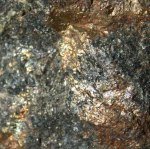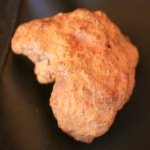Gold Identification - A 7 Point Checklist
Here are some Gold Identification tests that you can easily apply in the bush while you are looking for gold and are not sure the rock you find is gold or just "Fools Gold"
So - What are the 7 Rules for Gold Identification
Here is the 7 Point Checklist to Make Sure You Don't Miss any Gold again!...
...OR Mistake a big Pyrites Specimen for Gold
Test for Gold
Notes
Colour
Gold is yellow and shiny it wont sparkle in the light like mica. Iron Pyrites has a brassy yellow colour.
Chalcopyrite is Yellow but brassy.
Be careful with just a reliance on a colour test. If a rock registers on your metal detector but is not the classic colour of gold make sure it is not coated by another mineral such as ironstone or manganese oxide.
Gold Doesn't change colour much or fade from light to shade
Check the gold in light and in shade and wet and dry - observe the gold in the sun then the shade it wont change much or fade if its gold.
If there is a significant change or fading in the colour of the metal it may not be gold.
Specific Gravity - Gold is Heavy
Gold is heavier than pyrites and much heavier than yellow mica.
Other minerals will move around in your pan much more readily than gold.
Some minerals like mica will float right out or your pan.
Gold is Malleable (it will flatten or change shape)
If gold is hit with a hammer it will flatten the other minerals like mica will shatter.
Dont use this test to destroy a nugget though.
Pin Prick Test
Small flakes of gold will yield to a pin whereas pyrite and chalcopyrite with crumble.
Flat Surface or Crystal structure
If the metal has a defined flat surface or crystal shape it is probably pyrites.
Water Test
Small pieces of gold will quickly sink to the bottom of a glass or jar of water.
Try it with lead and gold and see the difference!
If its Mica it will float or sink very slowly
 Pyrites in Rock Specimen
Pyrites in Rock Specimen Gold in Gravel
Gold in GravelClick here to return to Gold Facts Page from Gold Identification Page
Return to home page from Prospecting For Gold
![[Most Recent Gold Price Quotes in Australian $]](https://www.kitconet.com/charts/metals/gold/t24_au_en_auoz_2.gif)
![[Most Recent Gold Price Quotes in US $]](https://www.kitconet.com/charts/metals/gold/t24_au_en_usoz_2.gif)